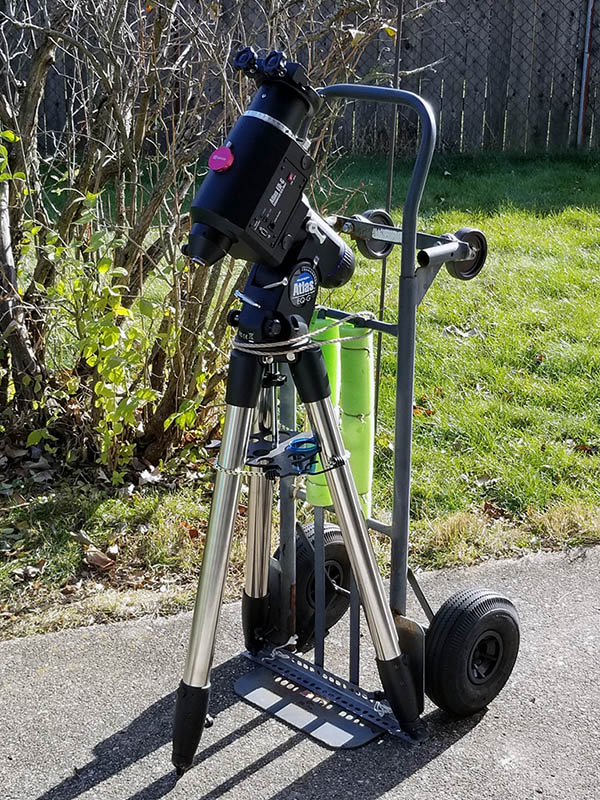
Jupiter & Saturn Conjunction – 12/20/2020, 18h23m EST
Camera: Canon 450D (Rebel XSi)
Lens: Canon EF 75-300 @ 150mm f/5.6
Filter: Sunpak UV/IR
Exposure: 1x2sec, ISO 400 saved as RAW
Darks: Internal (Long Exposure Noise Reduction On)
Software: Nebulosity, Photoshop
This is just a quick single frame of the Grand Conjunction taken about 24 hours before closest approach. Their separation at this time was 0.13 degrees (1/8th degree). I just used my Canon 450D on a tripod and a 2-second delay to allow vibrations to settle before the shutter tripped. If you look closely you can see a couple of Jupiter’s moons. Over the next couple of nights the view will be very similar as Jupiter slowly slips off to the upper left.











Recent Comments